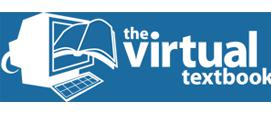Rounding
Students are required to be able to round numbers and measures to an appropriate degree of accuracy such as to a specified number of decimal places or significant figures, find simple error intervals and use standard interval and inequality notation.
Visit the secondary mathematics webpage to access all lists.
Arithmetic: Place Value
The activities sheet contains an activity requiring students to consider amounts rounded to a number of significant figures and decide what the possible values could be. Examples include the attendance at a football match, the number of people at a concert and the number of complaints received by a train company. There is also a similar activity, approximating to given number of decimal places.
Rounding Numbers N3
This activity begins by requiring students to place numbers on a number line to develop an understanding of what is meant by rounding to the nearest ten. It is suggested that the activity be repeated for rounding to other powers of ten and to a set number of significant figures.
Rounding and Estimating
'Rounding and Estimating' begins by revising basic operations using whole numbers and decimals before revising order of operations. The section appropriate to this topic is the section containing explanations, examples and exercises on rounding to a specific number of decimal places and to a specific number of significant figures.
Rounding numbers
This resource is to be used as inspiration for teachers when planning. The resource discusses a common misconception when rounding answers and explains how the misconception can be avoided by using a number line when rounding. The resource concludes with a simple exercise to complete.
Ordering and Rounding
This resource contains twelve activities. The activities appropriate to this topic are: Rounding to 10, using a number lines to round numbers to the nearest ten, Rounding to 10 Game in which players make a calculation whose answer, when rounded to the nearest ten, is marked off on the playing board, Decimal places match in which students match a number to its equivalent rounded to one, two or three decimal places and Significant Figures requiring students to round numbers to two of three significant figures.
Range of Area considers the upper and lower bounds of rounded numbers and hence calculates the upper and lower bound for the area of a rectangle.
Errors *suitable for home teaching*
This activity uses examples in the context of space and shape to find the upper and lower bounds of measurements given the degree of accuracy to which the measurement has been made and consider how possible errors accumulate.
Students consider what the actual length of a 25m swimming pool may be, how heavy a parcel could be, and the length of a journey before considering what happens when errors are combined by calculating areas and volumes.
Rounding
This resource contains two interactive excel files which deal with rounding of discrete and continuous variables and pose problems involving practical examples of calculations using rounded values.
The first interactive file shows two numbers rounded to the nearest integer and illustrates this on a number line. It also deals with the maximum and minimum values of the sum, difference, product and quotient of these rounded numbers. Subsequent sheets present problems using more practical applications of these skills and the starting values are rounded to the nearest 20, 5, 50, half hour and other amounts.
The next interactive file includes sets of numbers which are to be rounded to the nearest 10, 100 or 1000. The files also shows amounts of money which are to be rounded to the nearest £1, £5, £10 or £20 and decimals which are to be rounded to one, two or three significant figures. There is also the opportunity to round values to a given number of decimal places, significant figures or correct to given units.
There resources also include a range of worksheets which may be printed for classroom use.





